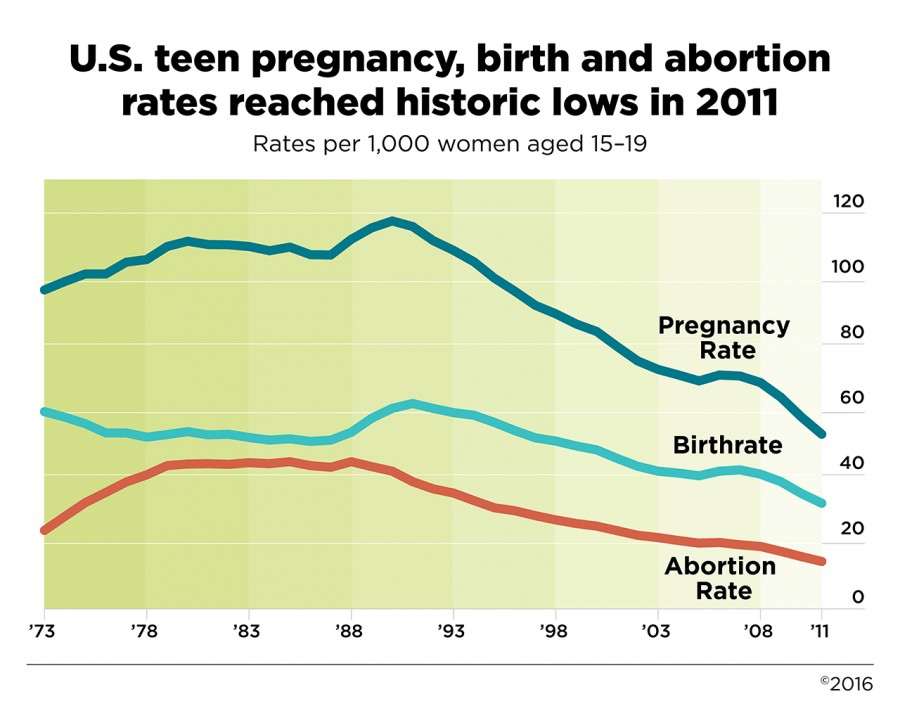Earlier this year, the U.S. Center for Disease Control and Prevention released the most recent statistics on fertility rates and births in the United States. Included was a statistic about teenage pregnancies, stating that teen pregnancies in the U.S. declined in 2016 for the 11th year in a row.
In 2016, the study reveals there were 20.3 births per every 1,000 women between the ages of 15 and 19 years old. In total, the teenage pregnancy rate in the U.S. has declined by 51 percent since 2007.
Clearly, this is good news for the country. Fewer teenage pregnancies means fewer children with greater likelihood of poor social and emotional well-being, and fewer single mothers, as well as an increased number of high school graduates and employed, productive members of society. In turn, this drops society’s prevalence of crime and poverty and — because children born to teenage parents are more likely to repeat their parents’ behavior — helps break the negative cycle of teenage pregnancy.
However, those who are interested in or pursuing the adoption process may be concerned that a drop in teenage pregnancies means a drop in available adoption situations, potentially increasing wait times. But this is not at all the case.
To understand how teenage pregnancies and adoption are related, it’s important to first understand who exactly are the women that choose to place their babies for adoption. Typically, birth mothers are women in their 20s who are already raising children at home — and, therefore, understand the commitment it would take to raise another child. Knowing this, they choose adoption to give their baby a better chance at life.
Surprisingly, while there are certainly teenage birth mothers out there, many teenagers choose a path other than adoption. In our experience, this means they either decide to have an abortion early in their pregnancy or raise the baby. Why? Most teenagers cannot fully comprehend the responsibility of raising a child, as they have no personal experience in the matter. It’s also common for a teenager’s parents or relatives to offer support in the raising of the child or take in the child as their own, instead.
At American Adoptions, we work hard to ensure that every woman considering adoption receives the information and support she needs to make the right decision for her — whether or not she ends up choosing adoption. We provide this assistance to teenagers and older prospective birth mothers alike.
Since January of this year, only about 8 percent of the prospective birth mothers who reached out to us were 20 years or younger. This is a statistic that has remained steady since our agency was founded. Despite the drop in teenage pregnancy rates over the last 11 years, the number of prospective birth mothers who have contacted our agency about making an adoption plan has stayed consistent, as well. Therefore, a family’s odds of adopting a baby through our program have also remained steady, and prospective parents should not be deterred by any reports of a falling teenage pregnancy rate.
If you’re considering adoption or in the adoption process, know that American Adoptions will work with you every step of the way to help limit your wait time. Fertility rates of prospective birth mothers have always fluctuated over the years, but every family that chooses to work with our agency will eventually add a new member to their family. Remember, your adoption specialist is there to help you through your adoption process and can always suggest any changes to your APQ that can help further reduce your wait time.



